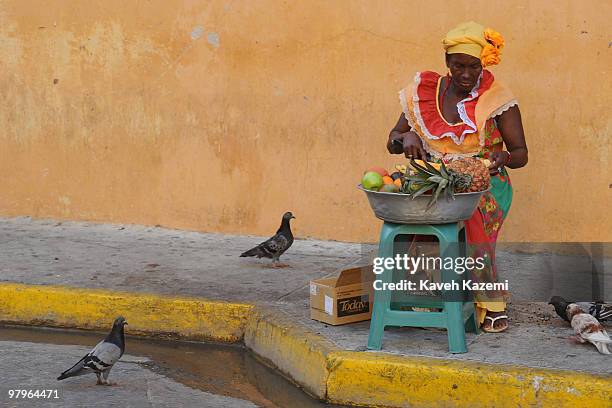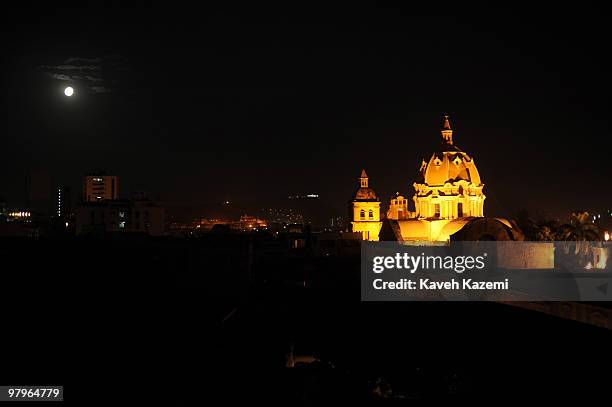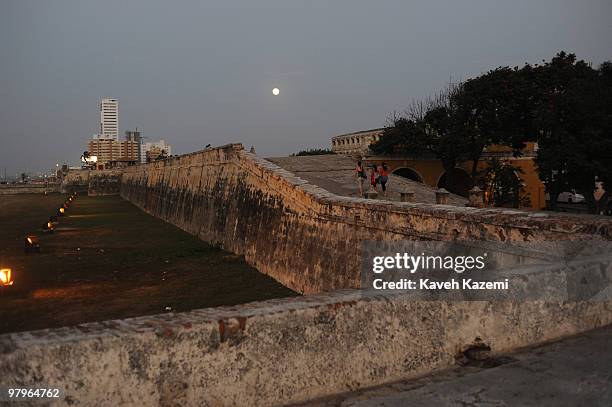Cartagena of Indies
CARTAGENA of INDIAS, COLOMBIA - JANUARY 29, 2010: Photos of legendary Cuban musicians hang on the wall in 'Cafe Havana' the most popular drinking place in Cartagena with live Cuban music. Cartagena de Indias was founded on 1 June 1533 by Spanish commander Pedro de Heredia, in the former location of the indigenous Caribbean Calamarí village. The town was named after Cartagena, Spain, where most of Heredia's sailors came from. During the seventeenth century, the Spanish Crown paid for the services of prominent European military engineers to carry out the construction of the fortresses which are today Cartagena's most significant identitifying features. Cartagena was a major trading port, especially for precious metals. Gold and silver from the mines in the New Granada and Peru were loaded in Cartagena on the galleons bound for Spain via Havana. Cartagena was also a slave port; Cartagena and Veracruz, (Mexico), were the only cities authorized to trade with black people. The first slaves arrived with Pedro de Heredia and worked as cane cutters to open roads, in the desecration of tombs of the aboriginal population of Sinú, and in the construction of buildings and fortresses. The agents of the Portuguese company Cacheu distributed human 'cargoes' from Cartagena for mine exploitation in Venezuela, the West Indies, the Nuevo Reino de Granada and the Viceroyalty of Perú. (Photo by Kaveh Kazemi/Getty Images)

PURCHASE A LICENSE
How can I use this image?
kr 2,500.00
NOK
Getty ImagesCartagena of Indies, News Photo Cartagena of Indies Get premium, high resolution news photos at Getty ImagesProduct #:97964552
Cartagena of Indies Get premium, high resolution news photos at Getty ImagesProduct #:97964552
 Cartagena of Indies Get premium, high resolution news photos at Getty ImagesProduct #:97964552
Cartagena of Indies Get premium, high resolution news photos at Getty ImagesProduct #:97964552kr4,000kr950
Getty Images
In stockMedium kr 2,500
DETAILS
Restrictions:
Contact your local office for all commercial or promotional uses.
Credit:
Editorial #:
97964552
Collection:
Getty Images News
Date created:
January 29, 2010
Upload date:
License type:
Release info:
Not released. More information
Source:
Getty Images South America
Object name:
KK060_Cartagena
Max file size:
4016 x 2672 px (13.39 x 8.91 in) - 300 dpi - 1 MB




























